Koji-aged Steaks: Speeding the Process for Flavor
Remember the time we dry-aged a loin of beef for 45 days so that we could make dry-aged steaks? Man, that was tasty. It sure would be nice to get some of that same flavor and texture without having to wait a month and a half to eat. Oh wait, there is! In this post, we’ll discuss koji-aging steaks for deeper flavor and tenderer meat. It’s a fascinating process, and one that is well worth trying out. Let’s take a look.
What is koji?
Koji is the Japanese name for the fungus Aspergillus oryzae. Yes, it is mold. It may seem odd to use mold on food—it is, after all, one of the only organisms on earth that actually competes with us for our food. We are well trained to throw out or at least trim food that has mold growing on it. But there are notable exceptions, blue cheese for one. The agent that makes blue cheese blue—and gives it its delicious funk—is Penicillium roqueforti. Then there are brie and camembert cheese, the rinds of which are composed of a living coat of Penicillium camemberti. And Penicillium nalgiovense grows on the casings of many salamis. So, mold on food has precedent.
But what does koji do? It is used in East Asian cooking and food production for fermentation. It grows primarily on grain, most notably rice (hence the species name, oryzae, meaning rice). Grown on grain, the koji is then moved to another substance where it can continue its biological processes. It is the key to making miso, soy sauce, gochujang, and many other ferments from the region. It is special because it is, in essence, omnivorous.
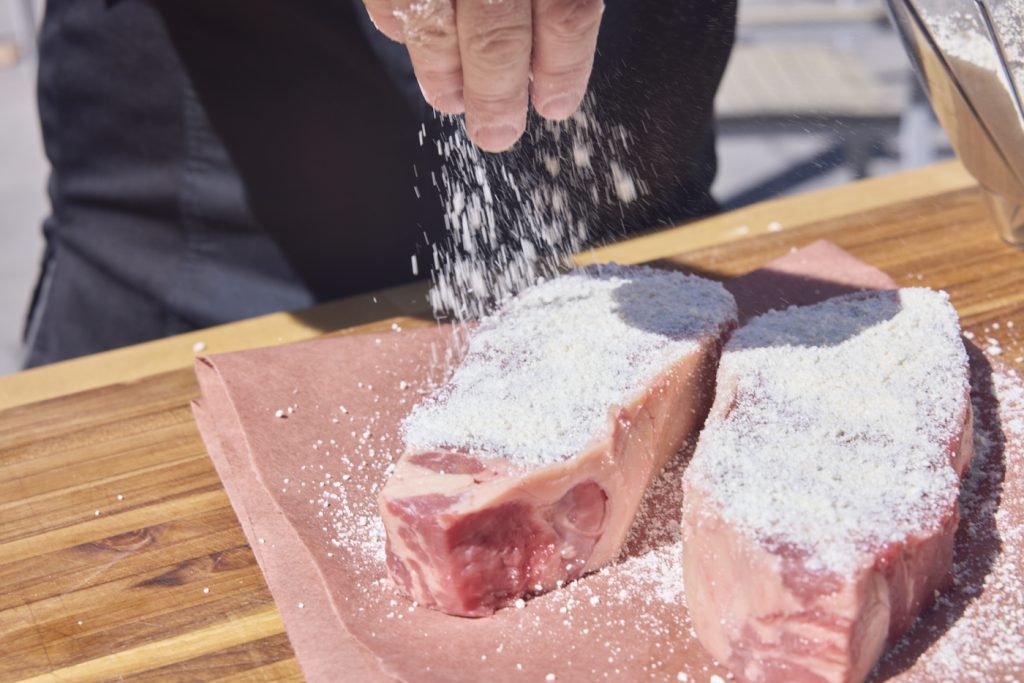
Koji enzymes
Koji produces a variety of enzymes, including some that are amylolytic and some that are proteolytic. Amylolytic enzymes break down starches into their component sugars, making the rice that koji grows on—and any other starches it gets to work on—taste sweeter. The proteolytic enzymes break down proteins into amino acids—the constituents of proteins. That makes the proteins they work on taste savory, umami, nutty, etc.
That proteolysis, breaking down proteins into aminos, may ring a bell if you’re familiar with the science of meat cookery. If it sounds very much like the Maillard reaction, you’re not far off. Maillard browning is a reaction that happens at high heat between amino acids and sugars to create the flavor molecules we associate with browned food—the sear on a good steak and the crust of a loaf of bread are both due to the Maillard reaction. Well, the enzymes made by koji mold do basically the same thing, but at room temperature. That’s why soy sauce has some of the same umami flavors that a steak does, and why it complements seared meats so well: the koji has changed the proteins in the soy beans into tasty amino acids.
Koji-curing steak
For our purposes here, we are putting the proteolytic effects of koji to good use to simulate the dry aging process on an individual steak. By coating a steak with koji-inoculated rice powder, we put the proteolytic enzymes to work for us.
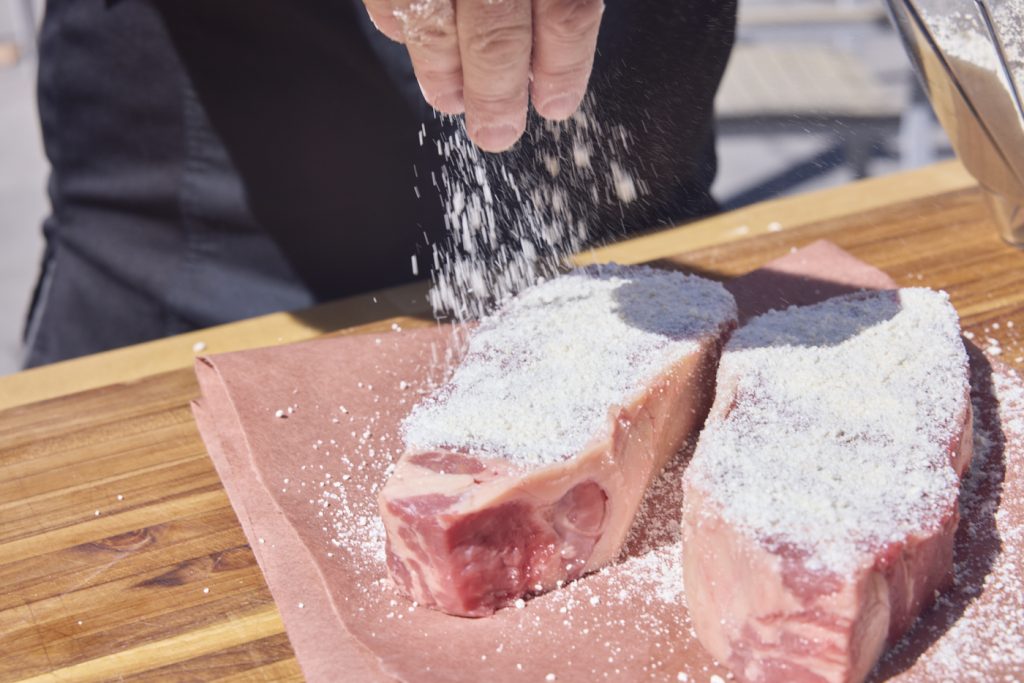
When we dry-age a steak, we work to accomplish a few different things: reduction of water content, concentration of flavor, and enzymatic and bacterial action to break down, tenderize, and flavor the meat. Well, here we have a mold that creates enzymes that do several of those things. We already talked about how the proteases create flavor—including the slight “funk” that is characteristic of dry aging—but by breaking down proteins, they also tenderize the meat. And there is a little dry aging that goes into this.
To cure the steaks, we take koji, make it into a coarse powder in a blender, then rub it all over the surfaces of our steaks. We then let the steaks sit, uncovered, in the fridge on a rack set into a pan for about 48 hours. During this time, the steak dries out somewhat, especially with the powdery rice pulling moisture up to the surface of the meat. In this way, we get the rest of the benefits of dry aging.
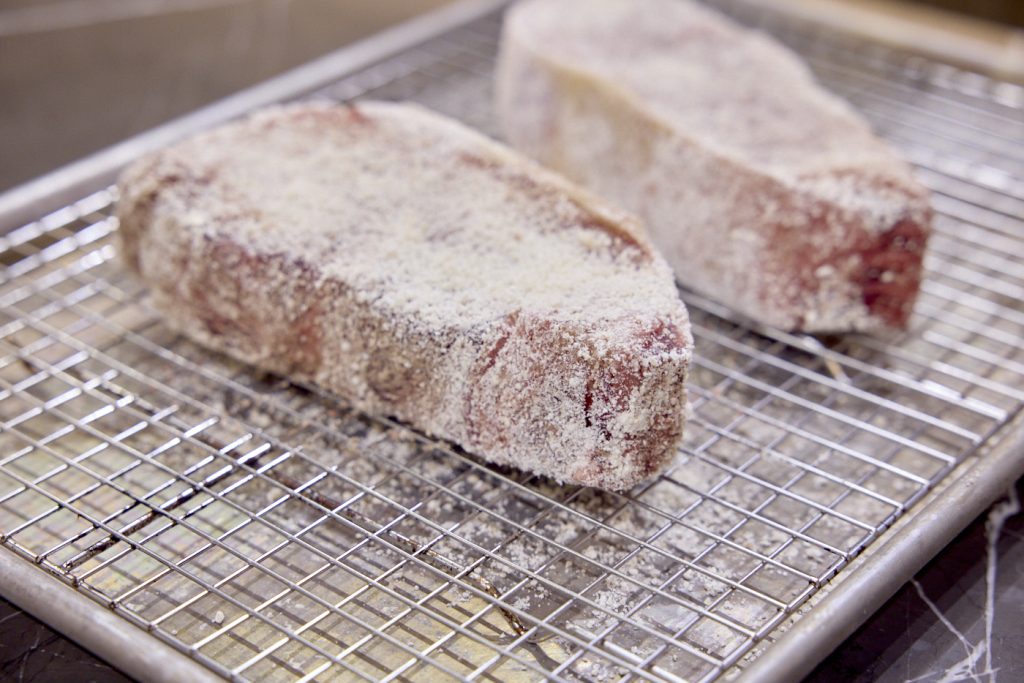
The koji is then rinsed from the surface of the meat before seasoning and cooking, and the results are impressive. The meat, tenderer than it should otherwise have been, is imbued with a depth of flavor, an almost soy-saucey umami flavor that is nothing short of alchemical. Is it identical to a 45-day dry-aged steak? No, but it comes pretty darn close. And if you consider how much less of the meat is wasted—there is no need to trim off the “jerky” after this aging—as well as the fact that it requires only 2 days’ investment instead of 45, it’s a heckuva winning proposition.
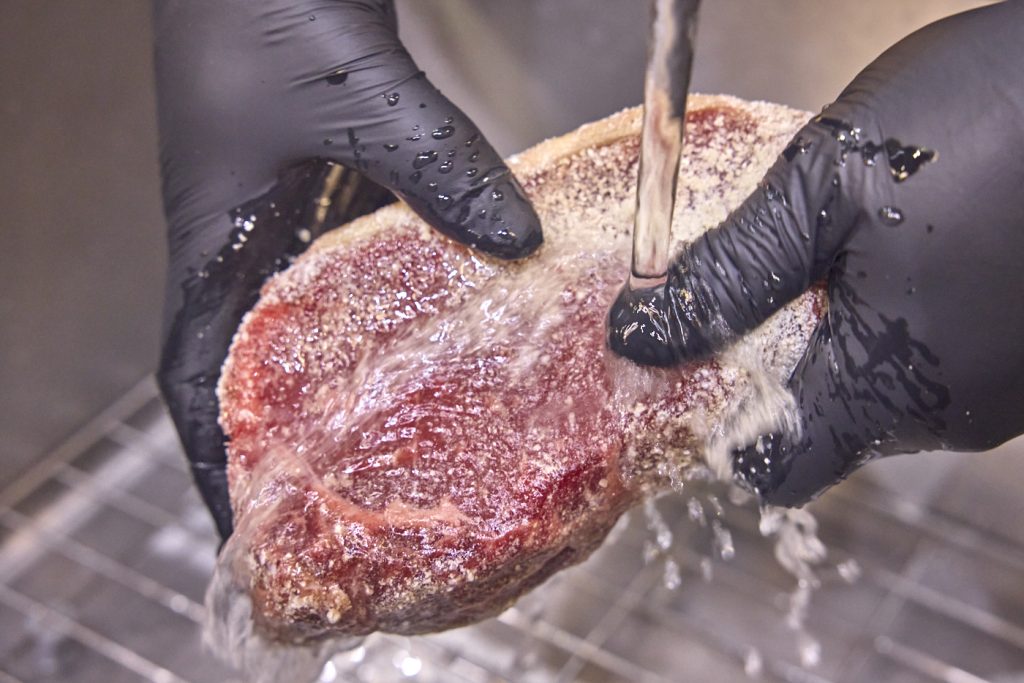
Where to get koji rice
It is important to note that you’re not looking for straight koji here, but koji rice, which is rice that has been inoculated with the mold and kept in a way that the mold has grown to cover it. it is often somewhat fuzzy and has grown together into a sheet or a block. You’ll need to break it up into chunks to use it. If you have a very good Asian grocery nearby, especially one that specializes in Japanese items, check its freezer section. Of course, you can always order koji rice online.
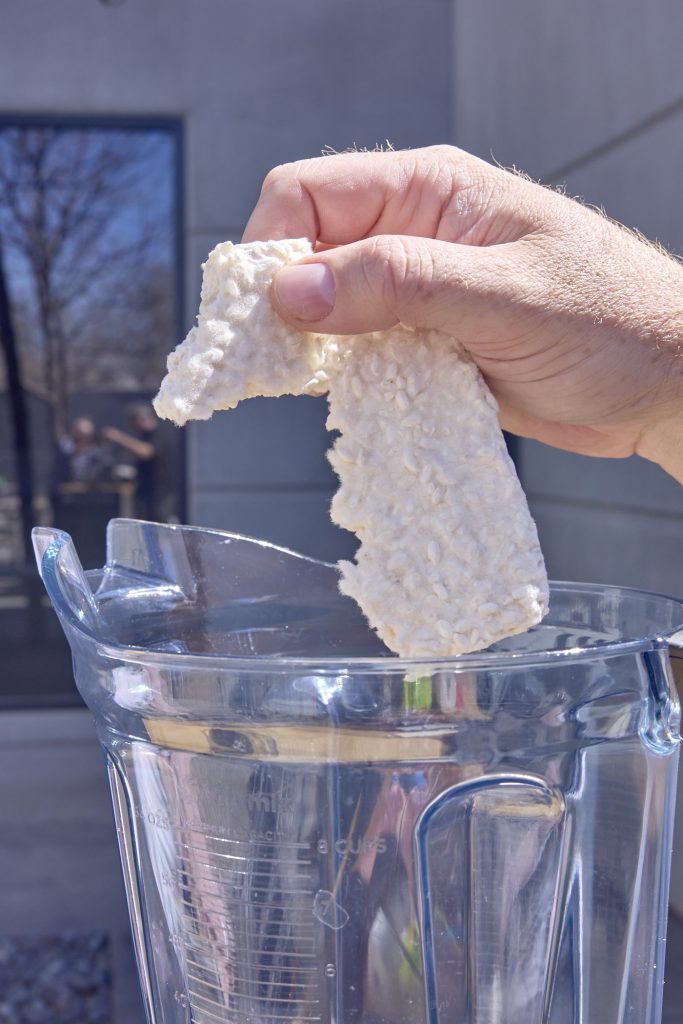
Cooking koji-aged steak
We decided to grill our koji steaks, but you can pan-sear them as well; standard steak-cooking practices apply in either case. We opted for the “just keep flipping” method wherein we sear the steak directly over our hot coals, flipping it every 45 seconds (a TimeStick is helpful). The continual flipping helps cook the steak evenly without as much overcooking near the edges as some other methods. We were looking for a medium-rare steak, so we wanted a final doneness temperature of 130–135°F (54–57°C). At the high temperatures we were cooking at, that meant a pull temp of about 120–125°F (49–52°C). Use your Thermapen ONE to check the temperatures starting after couple of minutes of cooking. The temp can suddenly jump up very quickly.
You can, of course, cook your koji steak using any sound temperature-based steak cooking method, but we loved the flavor of the grill in combination with the rich, soy-like umami brought on by the koji mold.
Try this one out. It’s an unorthodox recipe, but one that is well worth the little extra time it takes to prepare. Track down the koji and give it a try, we think you’ll be very happy with the results! Happy cooking!
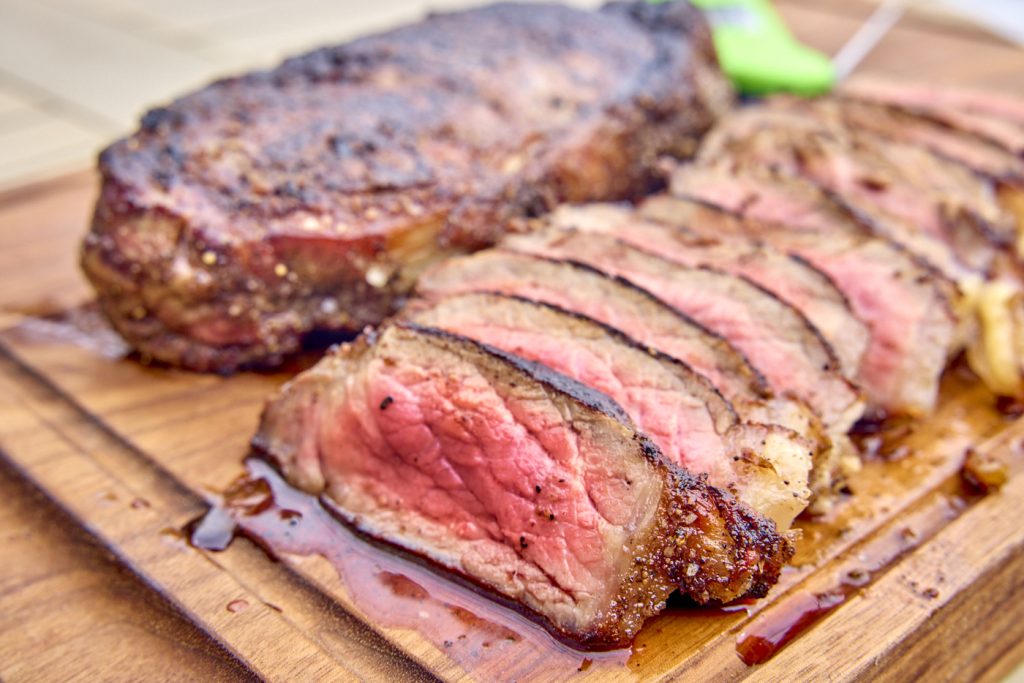
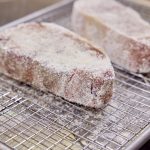
Koji-aged Steaks
Description
Koji-cured dry aged steak, with guidance from Bon Appétit.
Ingredients
- 2 steaks of your choice (we used NY strips this time)
- Koji rice (enough for about 1/4–1/3 C ground rice per steak)
- Kosher salt and fresh ground pepper for seasoning
Instructions
Two days before cooking
- Grind up the koji rice in a coffee/spice grinder or blender until it is a medium powder, not super fine.
- Rub the steaks all over with the koji rice powder so that all sides are covered. Be thorough.
- Place the rice-and-mold-covered steaks in the fridge, uncovered, on a rack set into a sheet pan.
- Let the steaks age for 2 days in the fridge.
Day of cooking
- Preheat your grill, set up for direct-heat cooking.
- Rinse the koji from your steaks, pat them dry, and season generously with salt and pepper.
- Cook your steaks, placing them over direct heat and flipping every 45 seconds. Use a TimeStick to keep track of the time! After 4 or 5 flips, you’ll start to see a crust developing.
- Start temping the steaks from time to time with your Thermapen ONE, looking for a pull temp of 120–125°F (49–52°C) for steaks that end up at medium rare—130–135°F (54–57°C).
- When the steaks reach your target pull temp, remove them from the grill and allow them to rest for about 5 minutes before eating.
- Serve the steaks, and skip the steak sauce!


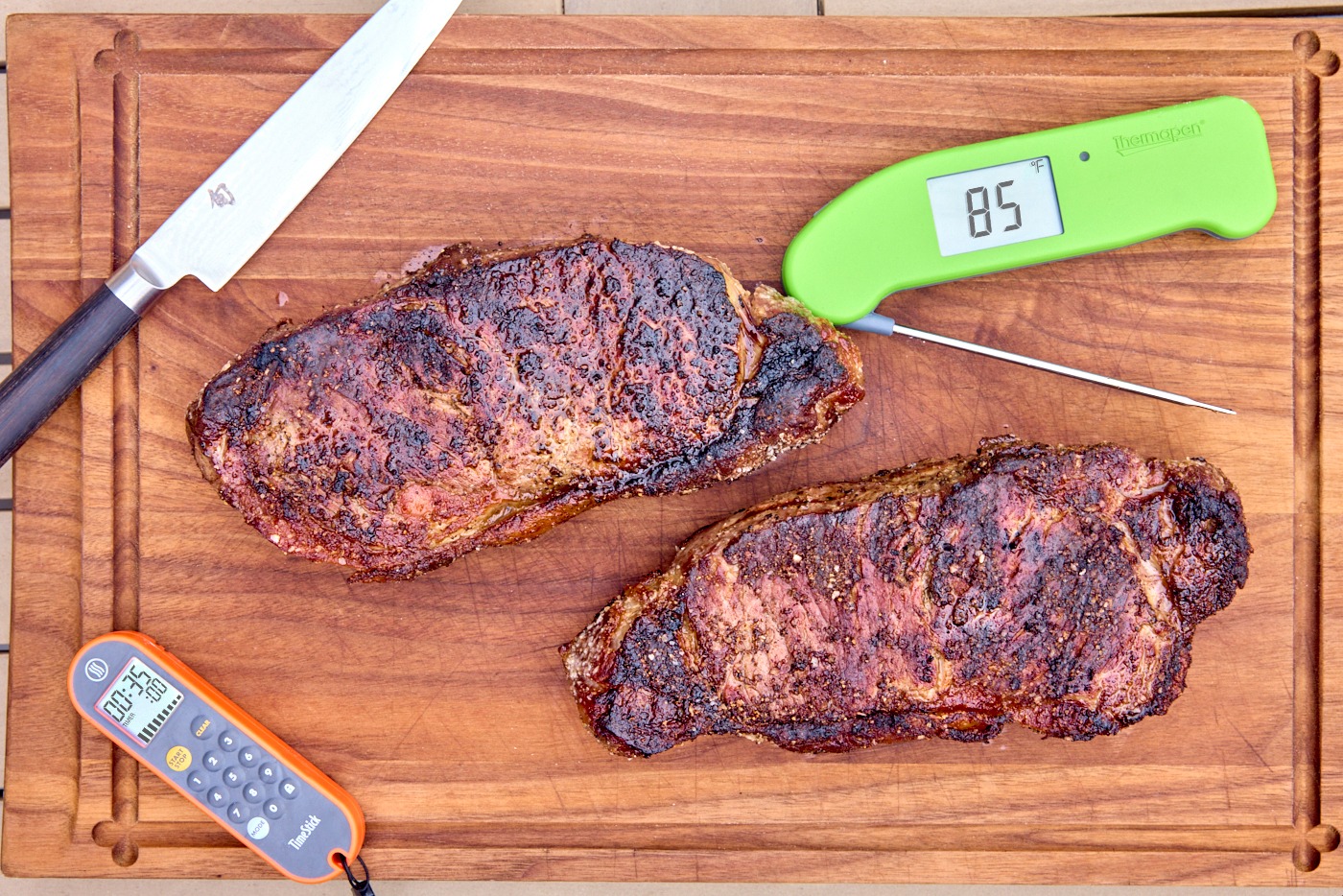


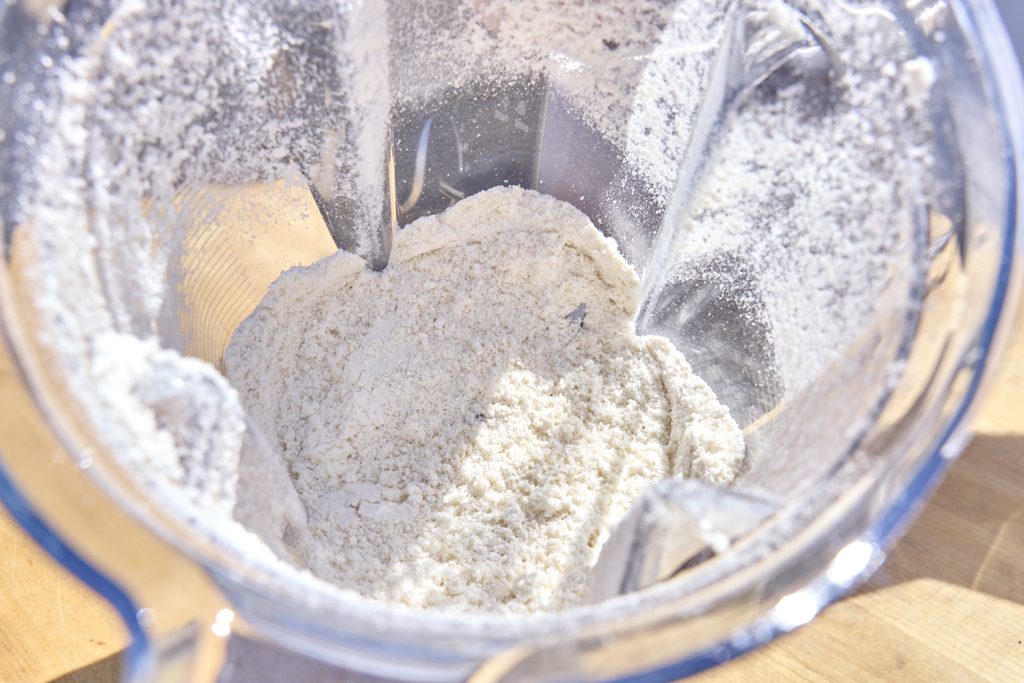
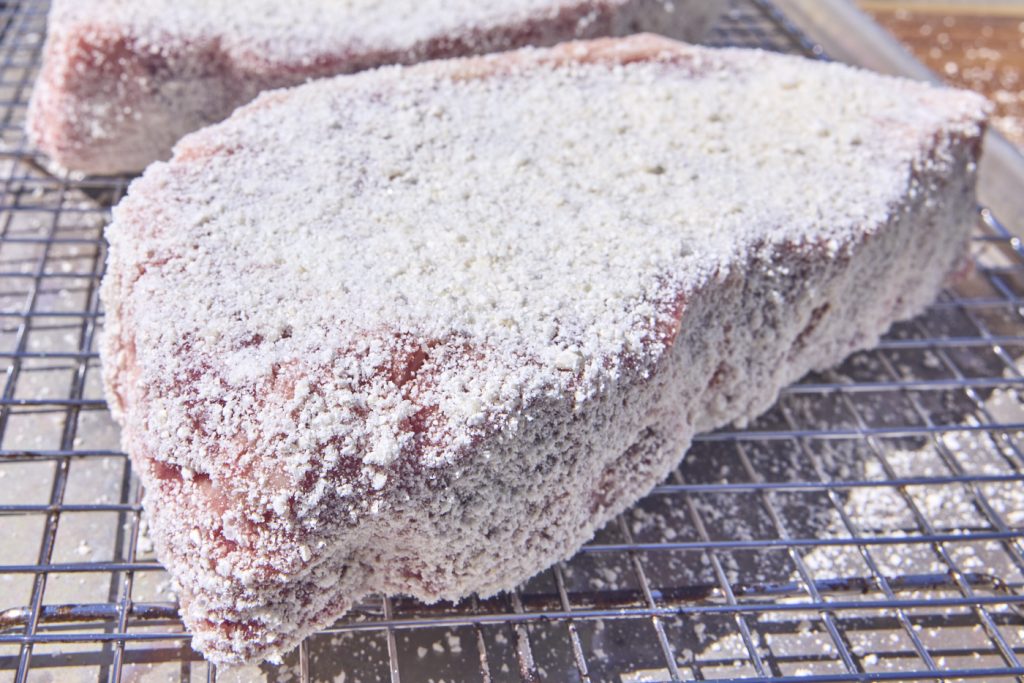
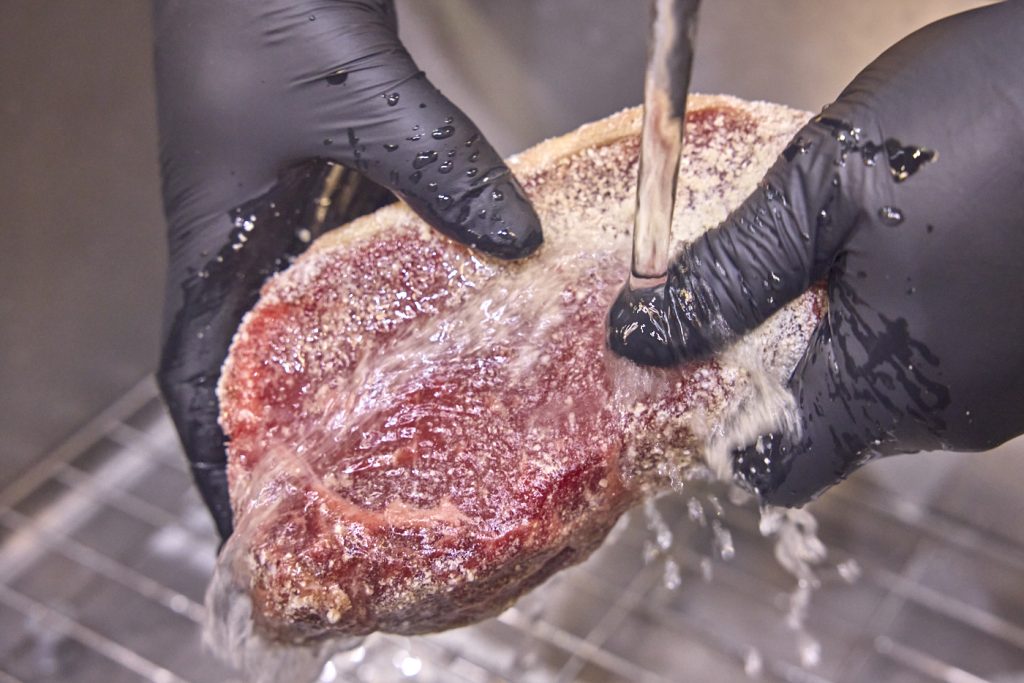
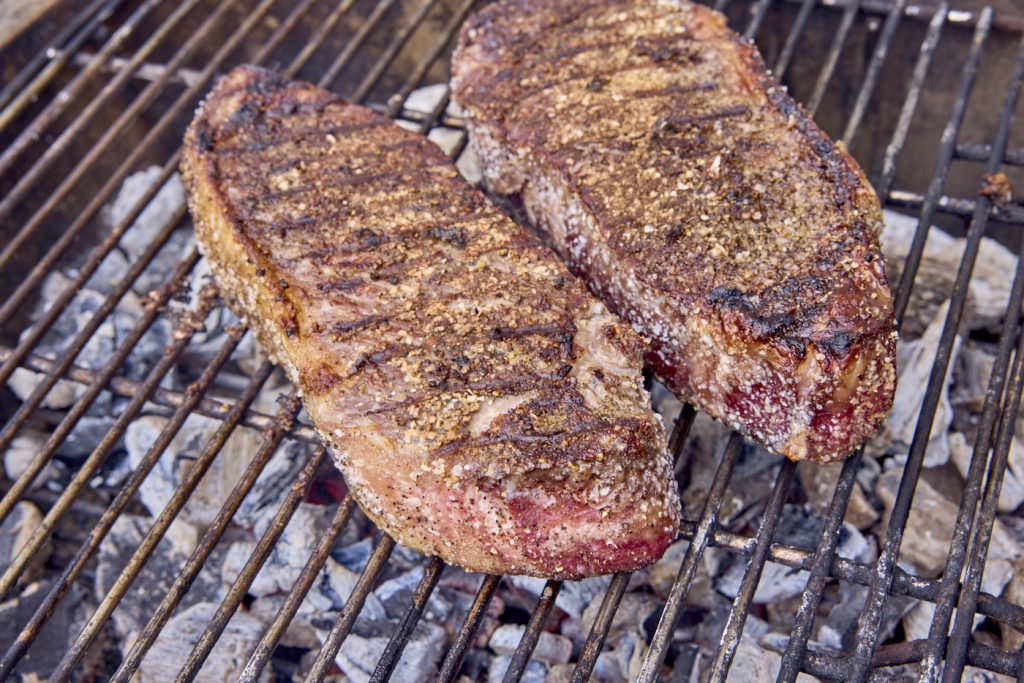
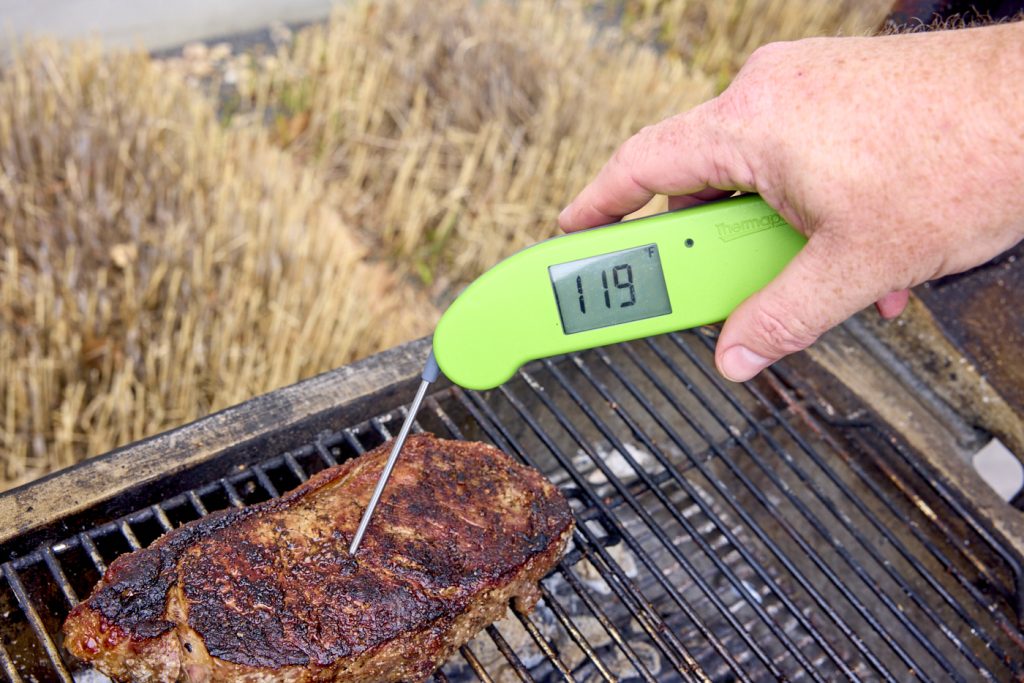
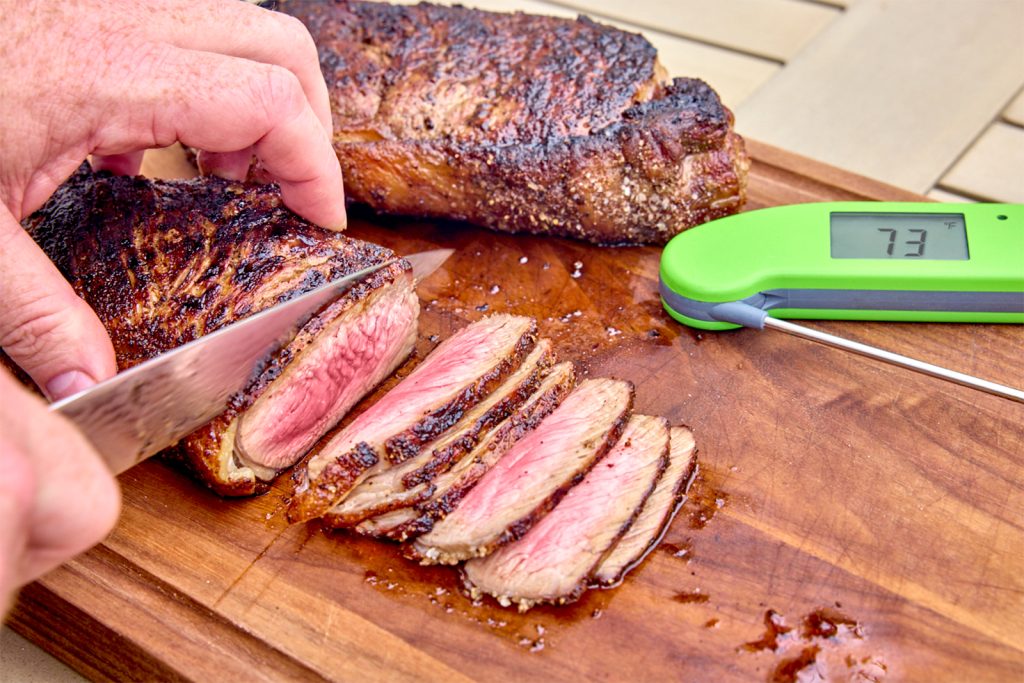
Can this method be used on a rib roast?
Yes! I don’t know how deeply the flavor will penetrate, but it will certainly add. When you rinse the koji off, be sure to pat the roast well dry so you can sear it well.
Could you post a link for places to find koji rice online?
There’s this: https://amazakeco.com/collections/koji
Once you get a little koji, you can grow your own without much difficulty. Sandor Katz’s The Art of Fermentation is a great resource for that, as is The Noma Guide to Fermentation.
I am intrigued by the process, but I have some concern about introducing the Aspergillus into my refrigerator, possibly inoculating other foods, as the steak is left open to the air after the Aspergillus is applied. Do you have any experience that might address that concern?
Fair question! At the life stage of the koji in this cook, it is not producing spores. it is alive and active, but not in its reproductive state. When it hits that stage it quickly becomes fluffy and fuzzy. But that mostly happens on a good supply of new grains. So it shouldn’t be a problem when it’s feasting on steak. The ThermoWorks fridge we did it in has had not further infestation, nor has my kitchen at home where I have been grwoing it on the counter for couple weeks not (even though the stuff on the counter DID go to the spore producing stage).
I tried this method and was very impressed. The umami flavor and smell reminded me of a fine steakhouse aged steak. This bone in Ribeye was more tender than the other Ribeye ( a week ago) I had out of the custom (Choice) 1/2 beef I purchased. Next time I am going to debone a ribeye, cut it in half and Koji rub one half and just salt the other half and leave in fridge 45 hours. Just to prove that what I was experiencing with the Koji-aged steak was legit. Not the flavor side of it because that is not in question but rather the level of tenderness. Also thanks for answering the one question about contamination of fridge with Koji spores. I was concerned about that as well.
Hello, can this method be used for Charcuterie like Coppa and others?
It can be used to deepen the flavor, for sure, but with cuts as large as Coppa, it can’t be the only thing at play. Make sure you cure and acidify properly!
Can this method work with sous vide steak?
Yes!
Do you think this would work on a rib roast?
Can you combine this with salt for a dry brine??
I do think it would work for a rib roast, but I’m not sure how deep the flavor change would reach. I don’t think the dry brine will work on it, however. the heavy salt of the dry brine will be hard on the fungi. that being said, you could do the koji soak, then rinse it off, dry brine it over night, and then cook it, which would be delicious.